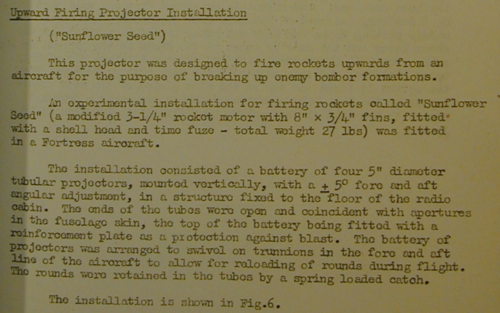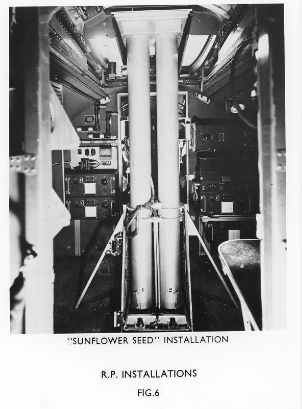I've always wondered whether an obliquely firing single-round shotgun sort of weapon could have been effective during daylight interceptions. There was good data on how close to the target a flak burst needed to be in order to guarantee destruction a heavy bomber. It seems to me that a charge sized to create a similar fragmentation pattern across maybe a 60 degree cone (up, down or sideways) would only require the interceptor to make a close, not terribly accurate, pass on the target with a high probability of success. If mounted away from the aircraft's aerodynamic center, in the rear fuselage for instance, control and structural problems could be minimized by firing a similar mass in the opposite direction simultaneously. With no feed mechanism, the device should be fairly cheap and lightweight, really nothing more than a mortar tube. Is anyone aware of any projects of this nature? If not, I may seek a patent because ya never know.


